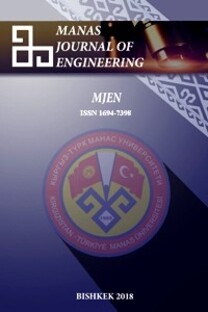Green supplier selection of a textile manufacturer: a hybrid approach based on AHP and VIKOR
Because of the increasing popularity on protecting the environment, consumers prefer environmentally friendly products in recent years. Due to the trend between consumers, companies have changed their production processes. The first necessity for production of an environmentally friendly product is to supply less harmless raw materials. Therefore, companies have to supply production inputs from green suppliers in order to produce environmentally friendly products. Since the wide use range of textile products make them products that is desired to be green products, green supplier selection of a textile manufacturer is considered in this study. The main aim in this study is to propose a decision model for determination of the best green suppliers. In the proposed model, Analytic Hierarchy Process (AHP) and Vise Kriterijumska Optimizacija I Kompromisno Resenje (VIKOR) methods are integrated. AHP is used to determine criteria weights and VIKOR is used to evaluate alternative suppliers. Seven alternative green suppliers are evaluated by taking 5 main criteria and 17 sub-criteria into account according to the opinions of planning department experts of the company. Alternative green suppliers are ranked by using the proposed methodology and the study is concluded with suggestions for further studies and by giving some managerial implications.
Keywords:
Multiple criteria decision-making green supplier selection, Analytic Hierarchy Process, VIKOR,
___
- Lu L.Y.Y., Wu C.H., Kuo T.C. “Environmental principles applicable to green supplier evaluation by using multi-objective decision analysis, International Journal of Production Research, 45, (2007), 4317-4331.
- Lee A.H.I., Kang H.Y., Hsu C.F., Hung H.C. “A green supplier selection model for high-tech industry”, Expert Systems with Applications, 36, (2009), 7917-7927.
- Tuzkaya G., Özgen A., Özgen D., Tuzkaya U.R., Environmental performance evaluation of suppliers: A hybrid fuzzy multi-criteria decision approach, International Journal of Environmental Science and Technology, 6, (2009), 477-490.
- Hashemi S.H., Karimi A., Tavana M. “An integrated green supplier selection approach with analytic network process and improved Grey relational analysis”, International Journal of Production Economics, 159, (2015), 178–191.
- Kuo T.C., Hsu C.W. and Li J.Y. “Developing a green supplier selection model by using the DANP with VIKOR”, Sustainability, 7, (2015), 1661–1689.
- Luthra S., Govindan K., Kannan D., Mangla S.K., Garg C.P. “An integrated framework for sustainable supplier selection and evaluation in supply chains”, Journal of Cleaner Production, 140, (2016), 1686-1698.
- Saaty, T. L. The analytic hierarchy process. New York: McGraw-Hill. 1980.
- Opricovic, S., Tzeng, G.H. ”Compromise Solution by MCDM Methods: A Comparative Analysis of VIKOR and TOPSIS”, European Journal of Operational Research, 156, (2004), 445-455.
- Aydin, S., Kahraman, C. “Vehicle selection for public transportation using an integrated multi criteria decision making approach: A case of Ankara”, Journal of Intelligent & Fuzzy Systems, 26, (2014), 2467–2481.
- Beheshtinia, M.A., Omidi, S. “A hybrid MCDM approach for performance evaluation in the banking industry”, Kybernetes, 46, (2017), 1386-1407.
- Opricovic, S. “Fuzzy VIKOR with an application to water resources planning”, Expert Systems with Applications, 38, (2011). 12983-12990.
- Tayyar, N., Arslan, P. “Hazır Giyim Sektöründe En İyi Fason İşletme Seçimi İçin AHP ve VIKOR Yöntemlerinin Kullanılması”, Celal Bayar Üniversitesi Sosyal Bilimler Dergisi, 11, (2013), 340-358.
- ISSN: 1694-7398
- Yayın Aralığı: Yılda 2 Sayı
- Başlangıç: 2001
- Yayıncı: KIRGIZİSTAN-TÜRKİYE MANAS ÜNİVERSİTESİ
Sayıdaki Diğer Makaleler
Muideen Adebayo BODUDE, Theddeus Tochukwu AKANO, Adebayo Felix OWA
Elmira ABDYLDAEVA, Gulbarchyn Taalaibek KYZY, Bermet NARKULOVA
Ahmet HASTÜRK, Nursel AKÇAM, Tayfun OKAN
Mustafa Alp ÇETİN, Rita ISMAILOVA
Recep PALAMUTOĞLU, Cemal KASNAK
On the recursive sequence 20 1 2 5 8 11 14 17
Finite element analysis of thermal stress of laminated composite plates using Taguchi method
